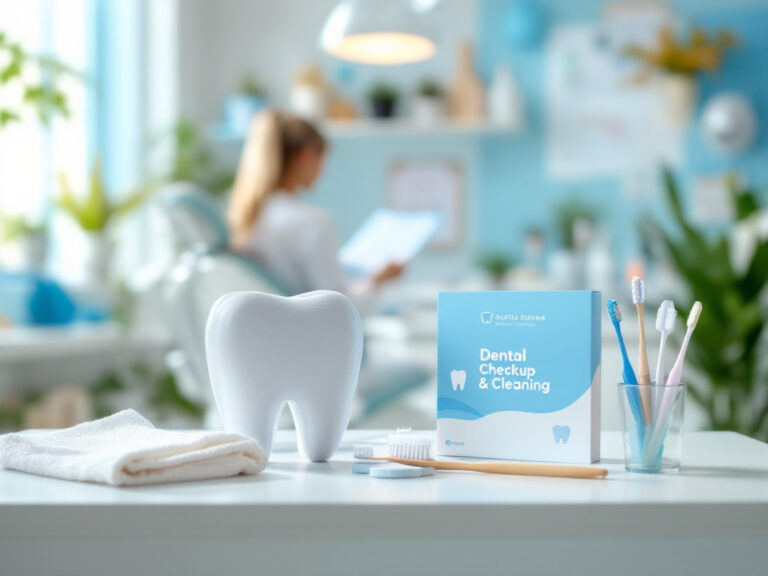Understand the urgency of a knocked out tooth
When you or a loved one experiences the sudden trauma of a knocked out tooth, it is natural to feel worry or even panic. The incident often happens unexpectedly, perhaps during a sporting event, an accidental fall, or a simple mishap at home. In these crucial moments, you want to know the best steps to secure a positive outcome. Acting promptly can save the natural tooth and prevent long-term complications. This immediate approach to knocked out tooth treatment enables you to maintain your healthy smile and avoid more extensive procedures later on.
More than five million teeth are knocked out every year in the United States in both children and adults (American Association of Endodontists). Despite how common this scenario can be, many people are unsure of how to respond if it happens to them. Furthermore, surveys show that a significant percentage of teachers, parents, and even caregivers do not feel comfortable intervening to replant the tooth immediately in the absence of professional help (Maynard Family Dentists). This uncertainty leads to lost opportunities for successful reimplantation, especially when time is critical.
Why timing matters
Time is the single most important element that determines whether a knocked-out tooth can be saved. Research reveals that a tooth treated within 30 minutes to one hour of being knocked out has a far greater chance of being successfully replanted (Cleveland Clinic). The delicate cells on the root surfaces begin to degenerate quickly as soon as the tooth is out of the socket and exposed to air. If these cells die, it reduces the possibility of attaching the tooth back to its socket. Acting fast and seeking immediate professional help are vital steps in preserving your natural tooth structure.
Importance of proper handling
It is equally important to handle the avulsed tooth with care. Avoid touching the root, which contains living tissue crucial for reattachment. Instead, pick up the tooth by the crown, or the biting surface, to minimize the risk of damage. If the tooth is dirty, gently rinse it with clean water but do not scrub it, and do not use soap or chemicals (American Association of Endodontists). This gentle approach helps keep viable root surface cells intact.
Steps to take at home
Knowing the proper steps to take immediately after a tooth is knocked out can make the difference between saving and losing it. Even before you can access professional dental services, here are some actionable tips you can follow to give your tooth the highest chance of survival.
- Locate the tooth quickly
Safely pick it up by the crown. Make sure you avoid any contact with the root. If you cannot find the tooth in the immediate area, check your mouth to ensure it is not lodged in the gums or cheeks. - Rinse the tooth gently
If the tooth has fallen on a dirty surface, gently rinse the crown with clean water. Do not scrub or remove any attached tissue fragments. - Attempt reimplantation
If possible, place the tooth back in its socket. Use a mirror or carefully align the tooth with the gum line. Once in place, gently bite down on a clean piece of gauze or cloth to keep the tooth stable while you proceed to the dentist. - Keep the tooth moist if reimplantation is impossible
In some situations, you may not be able to reinsert the tooth, especially if the socket is badly damaged. In those cases, store the tooth in milk or tuck it inside your cheek so that it remains moist. You can also use an emergency tooth preservation kit such as Save-a-Tooth. Avoid storing it in water because the root surface cells cannot survive extended contact with normal tap water (American Association of Endodontists). - Control bleeding
A knocked-out tooth can sometimes result in bleeding. Press a clean cloth or gauze against the gum area with gentle pressure. You might use cold compresses to reduce swelling, but be careful not to disrupt the newly repositioned tooth if reimplanted. - Seek immediate professional help
Contact a dentist, endodontist, or an emergency dental care service promptly. Even if it has been longer than one hour, there is still the possibility of salvage. Quick action in conjunction with professional treatment dramatically increases the success rate of replantation.
How professional treatment can save your tooth
Rapid, skilled intervention can save your tooth and reduce the likelihood of complications such as infection, structural damage, or the need for more invasive procedures. Dentists and endodontists utilize advanced diagnostic tools to evaluate your condition. These include digital xray imaging, 3d cone beam imaging, and intraoral camera examination. Such methods help your dental team:
- Identify the extent of damage to the tooth, roots, and nearby tissues
- Determine whether you need a root canal therapy to remove any compromised dental pulp and prevent infection
- Assess whether the tooth can be stabilized in the socket with a splint, or if other solutions are necessary
Reimplanted tooth timeline
When you arrive at the dental office, your provider will make every effort to place your tooth back into the socket if you have not already done so at home. Once the tooth is correctly situated, your dentist may:
- Apply a stabilizing splint to hold the tooth in place
- Prescribe antibiotics if there is concern about infection or tissue damage
- Recommend a root canal therapy in some cases to remove damaged pulp and prevent long-term complications
You typically need to return for follow-up visits, possibly over the course of several weeks or months, to ensure the tooth is healing properly. According to the Cleveland Clinic, a reinserted tooth may last for 10 to 20 years, but long-term success varies depending on factors such as age, the condition of the tooth, and the time elapsed before reimplantation. Even if the tooth eventually becomes loose or fails, reimplantation can buy you precious years before you consider restorations like a dental bridge placement or a porcelain crown service.
If reimplantation is not possible
There are times when saving the tooth simply is not feasible. This may happen if it has been out of the mouth for an extended period, if the root is damaged beyond repair, or if a fracture extends below the gum line. In these cases, you still have options to maintain a vibrant smile and functional bite. Possible replacements include:
- Dental implants
A dental implant provides a sturdy, long-term replacement that closely mimics the look, feel, and function of a natural tooth. Although this option may require multiple appointments, many patients find the permanence and comfort worth the investment. - Dental bridges
A bridge can fill the gap of a missing tooth by anchoring onto adjacent teeth. This procedure may involve placing crowns on the neighboring teeth for extra support, creating a functional and aesthetically pleasing solution. - Dentures
If multiple teeth are missing, full denture fabrication, partial denture service, or snap-in denture service might be suitable. Modern dentures are more comfortable and realistic-looking than ever, giving you the ability to speak, chew, and smile with confidence. - Extractions and advanced restorations
If you have a severely damaged tooth or want to explore a permanent plan for your oral health, you might require a tooth extraction or even a surgical tooth extraction. Once extraction is complete, you can discuss other restorative routes, including porcelain crown service or implants.
Every case is different, and your dentist will guide you toward the best choice, factoring in your oral health, aesthetics, budget, and lifestyle. It is possible that you may need additional procedures such as bone grafting ridge preservation if the jawbone structure has been compromised.
Preventive steps to avoid tooth avulsion
Just like many aspects of healthcare, prevention is often easier and more cost-effective than treatment. While accidents cannot always be avoided, you can reduce your risk of a knocked-out tooth with the following measures:
- Wear protective gear
If you participate in contact sports or recreational activities, a custom-fitted mouthguard can protect your teeth. Not only does this help cushion blows to your face, but it also reduces the likelihood of tooth avulsion. - Maintain healthy habits
Good oral hygiene is your first line of defense. Regular professional teeth cleaning and routine dental checkup can help spot early signs of weaknesses or decay that might make your teeth more vulnerable to injury. You can also benefit from fluoride treatment to strengthen tooth enamel. - Address underlying issues
Conditions like bruxism (teeth grinding) and TMJ disorders can weaken tooth support or cause cracks. Using a tmj oral appliance or seeking medication management for dental anxiety can protect your teeth from worsening damage over time. - Supervise children
Kids and teens are at higher risk for accidental tooth knockouts, especially if they are involved in sports or rough play (makeO blog). Make sure they wear mouthguards if required. Educate them on safe play methods and always supervise them during high-impact activities. - Schedule regular oral cancer screening
Although an oral cancer screening may not directly relate to tooth avulsion, overall mouth and tissue health can play a role in how well your teeth are anchored. Ensuring your gums and surrounding tissues are healthy can bolster resilience.
While these measures cannot eliminate every possible accident, they do drastically reduce the onset of tooth injuries and help maintain strong dental structures.
Why you should choose Reimels Dentistry
When you are searching for reliable knocked out tooth treatment, Reimels Dentistry strives to cover all bases for you and your loved ones. Our goal is to deliver industry-leading preventive, restorative, and cosmetic dental care to suit each person’s unique needs. We want you to feel reassured knowing you have a knowledgeable team that prioritizes both immediate attention and long-term health.
- Immediate emergency dental care
Accidents do not run on schedules. That is why we are prepared to handle urgent situations, including avulsed teeth, through our emergency dental care services. By emphasizing quick, efficient treatment, we give your natural tooth the best fighting chance for successful reimplantation. - Comprehensive services under one roof
From the moment you step into Reimels Dentistry, you have access to a full spectrum of dental options. We offer everything from routine checkups to specialized treatments such as root canal therapy, porcelain veneer placement, and invisalign service. Our in-house team works together seamlessly, so you get consistent advice and treatment without needing multiple referrals. - State-of-the-art technology
We invest in advanced diagnostic tools like 3d cone beam imaging, which provides a detailed, three-dimensional view of your jaw, teeth, and surrounding structures. This technology is vital in accurately diagnosing the extent of injury and mapping out an effective treatment plan. Furthermore, digital xray imaging exposes you to lower radiation levels while still capturing high-quality images. - Patient comfort at the forefront
We believe compassion and empathy are as important as clinical expertise. Surgeries can be stressful. That is why we offer various sedation dentistry service options, including oral sedation, nitrous oxide sedation, and iv sedation dentistry. Our aim is to keep you at ease, whether your treatment involves reimplanting a tooth or exploring restorative options. - Collaboration and personalized care
Not all dental emergencies are identical. Your oral health needs may differ from the next patient’s, especially if there are co-occurring issues like periodontal disease, past tooth restorations, or other medical conditions. By focusing on patient centered dental care, we tailor every step of your plan. We also provide transparent guidance about the cost of treatments through transparent dental pricing and additional support like our dental membership plan. - Proactive preventive plan
Teeth are valuable and deserve protection. Beyond emergency services, Reimels Dentistry emphasizes prevention through regular routine dental checkup, professional teeth cleaning, gum disease treatment, and more. Identifying early warning signs can reduce your risk of developing vulnerabilities that lead to tooth avulsion.
By choosing Reimels Dentistry, you are partnering with a practice that values timely care, comprehensive solutions, and a supportive atmosphere. Your oral health, comfort, and confidence are our priorities, and we are here to guide you through everything from basic preventive measures to complex restorative and cosmetic treatments.
Frequently asked questions
- Can a knocked-out tooth be saved if it has been out for more than an hour?
Even though the ideal time frame for successful reimplantation is within 30 to 60 minutes, it is still possible for a dentist to save a tooth that has been out for longer. If you keep the tooth moist, avoid touching the root, and see a dental professional immediately, you increase your chances of success. - Do I need a root canal if my tooth has been knocked out?
A root canal therapy is not always mandatory for a tooth that has been knocked out. However, in many cases, avulsed teeth risk bacterial infiltration or pulp damage, so your dentist may recommend root canal treatment to protect the tooth from infection and help preserve it long term. - What should I do if I can’t reinsert the knocked-out tooth?
If you cannot reinsert the tooth, place it in a sealed container with milk or use a tooth preservation kit like Save-a-Tooth. Another option is to tuck it in the cheek pouch, ensuring it stays moist. Water is not recommended because it can damage the cells on the root surface. - Will I need a replacement tooth if reimplantation fails?
If reimplantation fails or the tooth becomes nonviable, you can choose from various restorative options. Common treatments include dental bridge placement, dental implants, full denture fabrication, or partial denture service. The choice depends on your overall oral health, personal preference, and budget. - How long does it take an avulsed tooth to fully heal after replantation?
Healing timelines differ, but most dentists recommend a follow-up period of several weeks to ensure the tooth reattaches properly. You might need checkups for up to five years to guarantee that your tooth remains functional and free from complications like infection or ankylosis. During this time, you could be asked to avoid chewing hard foods on that side and maintain excellent oral hygiene to support the healing process.
Choosing the right practice for knocked out tooth treatment is no small decision. By acting quickly at home and trusting a dependable team such as Reimels Dentistry for your preventive, restorative, and cosmetic needs, you can optimize your chances of keeping your natural tooth. Even if reimplantation is not feasible, a range of effective treatments exist to address your situation. The key is preparedness and a willingness to seek help immediately. If you or a loved one encounters a dental emergency, remember that quick thinking and professional care can make all the difference in preserving your healthy, confident smile.








